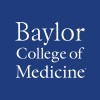
Assessment Of Educational Strategies In Heart Failure Patients Presenting To The Emergency Department...
Heart FailureThis study evaluates the impact of a new education-based intervention on outcomes in un- and under-insured Heart Failure (HF) patients presenting to the Emergency Department (ED) for care. Intervention patients will receive personalized education regarding their condition, pre- and post-testing of their HF knowledge base, and ED standard of care during the enrollment (index) visit. Patients will then be contacted via telephone 30 days post-index visit for re-testing and reinforcement of previously learned material. Patients in the control group will receive ED standard of care.

Intervention by a Cardiologist and Geriatrician in Elderly Patients After Admission Due to Heart...
Heart FailureRandomized clinical trial in which patients with a recent admission for heart failure in the cardiology department of the Hospital de Mar will be randomized to usual follow-up (cardiologist of the Heart Failure Unit) or follow-up by cardiologist and intervention by the geriatrician. This visit will be done at the same time. The main gial of this study is to evaluate whether the combined intervention of a cardiologist and a geriatrician reduces hospital all-cause rehospitalizations at 1 year.

Registrational Study With Omecamtiv Mecarbil (AMG 423) to Treat Chronic Heart Failure With Reduced...
Heart FailureThe purpose of this study is to determine if treatment with omecamtiv mecarbil when added to standard of care is well tolerated and superior to placebo in reducing the risk of cardiovascular death or heart failure events in adults with chronic heart failure with reduced ejection fraction (HFrEF).

Paced And Sensed Electrical Delay in CRT Therapy (PASED CRT)
Congestive Heart FailureCardiac resynchronization therapy (CRT) is a well established clinical therapy for patients with symptomatic left ventricular systolic dysfunction and electrocardiographic QRS duration of 120 ms or greater. Multicenter trials have consistently demonstrated CRT "non responder" rates of 32-43% at 6 months. Subsequent studies have shown that utilizing echocardiographic-guided device reprogramming for optimal atrio-ventricular (A-V) and interventricular (VV) delays at rest have improved clinical response. Recently, an echocardiographically validated automated pacemaker programmer-based intra-cardiac electrogram (IEGM) algorithm has been developed for rapid optimization of sino-ventricular (P-V), A-V and V-V delays at resting heart rates that is partially based on the interventricular conduction time delays. Nevertheless, controversy still persists as to the applicability of both echocardiographic and IEGM derived algorithms at elevated heart rates, as with physical activity, when patients are more likely to experience symptoms related to poor cardiac output. Recent studies have shown clinical benefits of pacing from sites of late intrinsic activation or intra-ventricular conduction delays (IVCD). Some studies have utilized the intrinsic SENSED IVCD method while others used the right ventricle (RV)-PACED IVCD. There have not been any studies to date that compare both methods to determine if one may yield a better clinical outcome with lower non-responder rates. This study predicts that the RV paced IVCD method will provide better clinical outcomes than the longest RV sensed IVCD as determined by the clinical composite score. The study is a prospective double blind study with an additional cross-over group consisting only of non-responders to compare the clinical response in 72 patients receiving CRT therapy. After successful CRT-D implantation and before hospital discharge patients will be randomly assigned in a 1:1 fashion to Group 1 (SENSED) or Group 2 (PACED). The patient will complete a Minnesota Living with Heart Failure questionnaire, compare echocardiographic data and be assessed by a blinded nurse and physician prior to discharge and at each follow up visit to maintain the double blind design. After 3 months of follow-up, non-responders from each group will be crossed-over to the other group and followed for an additional 3 months. Clinical data will be collected at the end of that 3 months and compared looking at changes in symptoms, ejection fraction (EF) and other echocardiographic measurements, New York Heart Assocation Function Class ( NYHA) class, clinical composite scores (CCC), device interrogation data and hospital admissions between the two groups to see if there is a statistical difference.

Hepatitis C Virus(HCV) Heart and Lung Study
Hepatitis CChronic5 moreThis is a multicenter study in Hepatitis C Virus (HCV) infected adult patients who also have advanced cardiac disease or advanced lung disease.

Comparing Rate Response With CLS Versus Accelerometer ICD Settings in Heart Failure Patients With...
Heart FailureICD1 moreDr. Jonathan Hsu and Dr. Eric Adler are conducting a research study to find out more about how implantable cardiac defibrillator (ICD) settings can be adjusted to improve patient cardiovascular health and quality of life. Patients are being asked to participate in this study if they have a history of heart failure and have or are scheduled to be implanted with a BIOTRONIK ICD that is capable of closed loop stimulation (CLS). CLS is a device setting that works with the cardiovascular system to optimize their heart rate during physical activity. This study is comparing BIOTRONIK's CLS setting to a standard accelerometer setting, which also is able to adjust the heart rate by movement sensors, when necessary. This study has been initiated by Dr. Hsu and Dr. Adler and is financially supported by BIOTRONIK, Inc. There will be approximately 15 participants in this trial.

CardioMEMS European Monitoring Study for Heart Failure
Heart FailureThe purpose of this study is to characterize the use of the CardioMEMS™ HF System when used in a real-world setting.

Recognition of Heart Failure With Micro Electro-Mechanical Sensors (REFLECS) FI
Heart FailureHeart Diseases1 moreIn this study the ability of smartphone sensors (accelerometer and gyroscope) to identify patients with heart failure will be studied.

OptiVol for Precision Medical Management of Heart Failure
Ischemic and Non-ischemic CardiomyopathyThis clinical study is designed to show that a multidisciplinary team following a pre-specified standard of care medication decision model based on data from an implanted cardioverter device will increase the rate of change in Guideline Directed Medical Therapy (GDMT) in the intervention group compared to the conventional group in patients with ischemic and non-ischemic cardiomyopathies.

A Tele-Health Symptom Management Program for Patients With Heart Failure: Pall-Heart
Heart FailureHeart failure is common in adults and is the most common hospital diagnosis in older adults. Patients with heart failure suffer numerous distressing symptoms daily. Although palliative care can improve suffering, rural-dwelling heart failure patients have poor access to specialized palliative care. The investigators propose to pilot test a tele-health palliative care intervention, PALL-HEART, in rural dwelling heart failure patients who live in Virginia and Kentucky. Study specific objectives are: Primary Aims: AIM 1: Compare HF patients who participate in a home-delivered tablet-based HF health education and gentle stretching intervention, to a health education (HE) group on: a) HF symptoms (weight gain, breathlessness, fatigue), b) psychological symptoms (depression, diminished QOL, resilience, self-care, and heart rate variability), c) physical function (endurance, strength, balance), and d) health care utilization rates (ED visits, office visits, hospitalizations). Hypothesis 1: HF symptoms (weight gain, breathlessness, fatigue), psychological symptoms (depression, diminished QOL, resilience, self-care), physical function (endurance, strength, balance) will improve in the intervention group. Hypothesis 2: Health care utilization rates (ED visits, office visits, hospitalizations) will decrease in the intervention group. Secondary: AIM 2: Acceptability - Acceptability of the intervention will be determined using: a) participation and satisfaction rates (participant logs), b) intervention retention rates, and c) barriers to participation (technology and participant motivation issues). Hypothesis: Subjects in the intervention group will have >80% participation and satisfaction rates and be willing to identify barriers to participation. acceptability of the intervention for future refinement and large scale testing.
